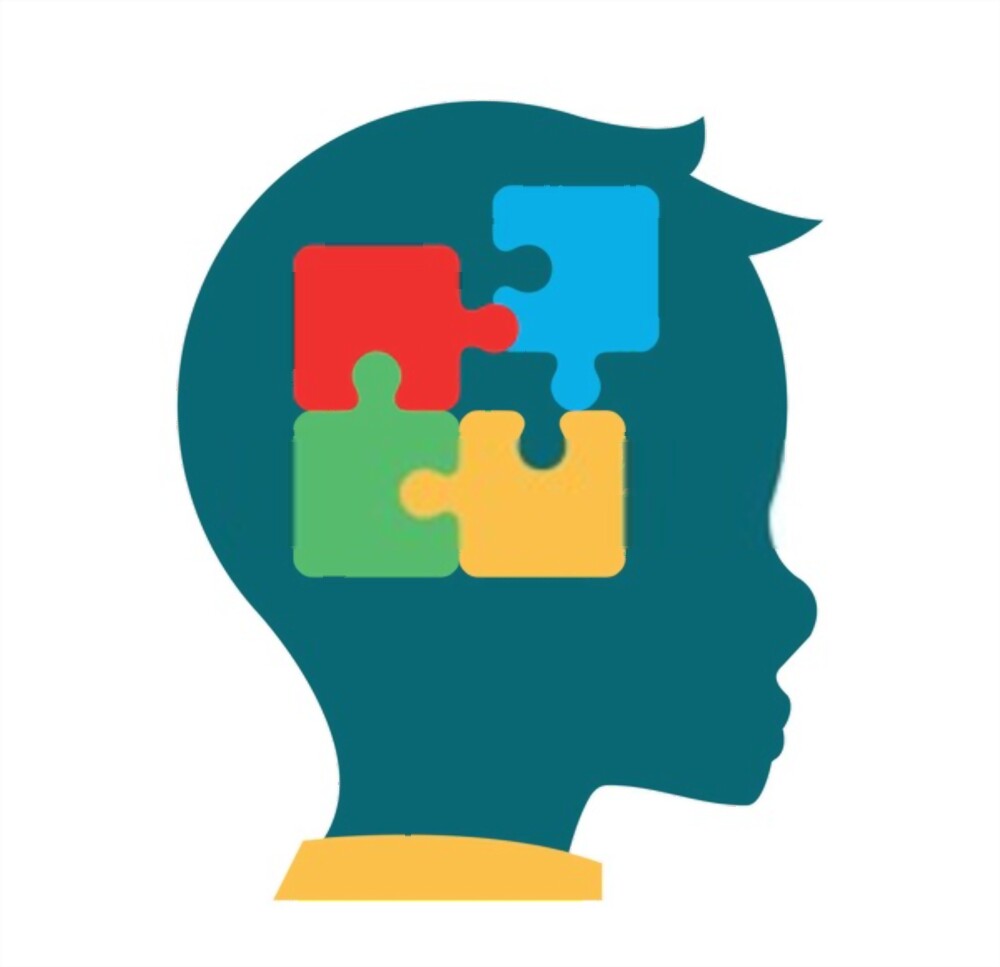Autism spectrum disorder (ASD)-
Autism is a developmental disorder characterised by social and communication impairments. Children with ASD show rigid and repetitive patterns of behaviour.
Asperger Syndrome- This term is used for individuals with autistic characteristics but not the accompanying delay in language and intellectual development.
Causes of ASD-
- Heredity- siblings with ASD have a 50% higher risk than general population
- Presence of allergens or viruses
- Replication of genetic linkage- most common in chromosome 2q,7q,15q
- parental history of psychiatric disorders
- pre-term births
- fetal exposure to psychotropic drugs or insecticides.
Cognitive deficits in ASD-
- Being locked into an egocentric stance
- Being unable to make friends
- Failing to notice when others are mocking them
- inability to think about thoughts
- Difficulty understanding other people’s behaviour. (mindblindness)
- Difficulty reading emotions from the face and voice
- Problems in recognising and remembering faces. They also tend to look at other parts of the environment, or at irrelevant parts of the face.
- Rigid patterns with adherence to routine and ritual
- narrow special interests
- repetitive motor mannerisms.
Sensory symptoms-
Sensory symptoms can be of three categories. The first is sensory overresponsivity SOR. In this the child in displays an exaggerated negative response to sensory input leading to avoidance.
For example, a child may be sensitive to particular tactile sensations of clothing and may turn out to anxious or upset while wearing it.
The second category is sensory underresponsivity. Here an individual is either unaware or slow to respond to a stimulus.
Example- he may be slow to respond to pain, which can lead to injury.
The third category of sensory-modulation disorder is sensory-seeking behavior. Here the child exhibits preoccupation with, certain sensory experiences. For example, a child may repeatedly put nonfood items in his mouth.
Theories attributed to pathophysiology-
- abnormal functioning in cortical areas
- abnormalities with cellular density of neocortex
- disruptions in connectivity between cortical and subcortical regions
Repetitive behaviours in ASD-
These behaviors comprise a group of heterogeneous behaviors. It includes activities such as hand flapping, body rocking, covering eyes and ears, arranging things in certain order, and insisting on placing items in the same place.
However, rrepetitive behaviors provide coping strategies to manage anxiety. In cases of hyperarousal, repetitive behaviors might be soothing, whereas in cases of hypoarousal, repetitive behaviors may act to increase sensory stimulation.
Problem behaviours in ASD-
People with ASD have lower levels of adaptive skills and more problem behaviors. The maladaptive or problem behavior can be noncompliance, poor mood regulation, withdrawal, impulsivity, aggression, self-injurious behaviors, hyperactivity, restricted interests, and distractive behaviors.
Attention issues-
People with ASD show difficulty to shift their attention. This occurs due to hypo-sensitivity to external stimuli. About 1/3rd people with ASD may have attention issues. They also show difficulty with selective attention and are unable to distinguish between what factor to focus and what to ignore. People with ASD also show anxious behaviours.
Savant abilities in autism-
Inspite of these social and nonsocial deficits, autism is also notable for ‘islets of ability’. Almost every individual with ASD is surprisingly good at something given their general level of ability. These may include jigsaw-type tasks, memory for facts, spotting small changes.
At the extreme these isolated skills become ‘savant’ abilities in music, calculation or art. Such skills are at least ten times more common in ASD than other developmental delays
These abilities occur due to ‘weak coherence’ account. This refers to a focused cognitive style in ASD. While we typically recall the gist of something and forget details, people with ASD seem to attend to features rather than wholes. As a result, people with ASD can be remarkably good at spotting details. This occurs either due to a superior ability to process low level perceptual features or an inferior ability to integrate pieces of information in to a coherent whole.
Treatment summary-
Treatment includes occupational therapy which ranges from sensory integration therapy, complimentary interventions, environmental modifications, task modifications, sensory diet, activity analysis.
Also read – https://vcurehealthcare.com/world-oral-health-day-importance-of-dental-hygiene/





